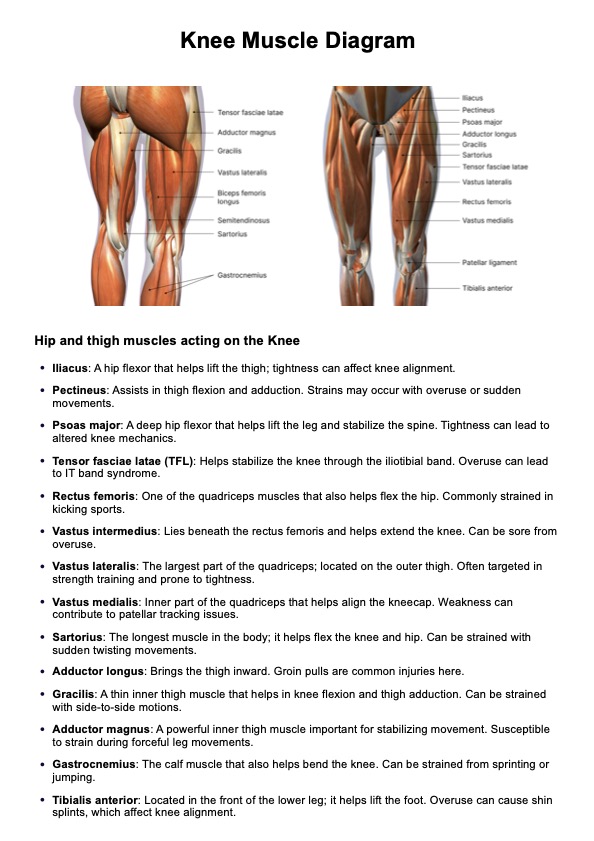The three most common knee injuries are anterior cruciate ligament (ACL) tears, medial collateral ligament (MCL) sprains, and meniscal tears. These typically occur due to trauma, twisting injuries, or repetitive strain on the knee joint.

Knee Muscle Diagram
Our Knee Muscle Diagram is a great go-to reference for students and professionals alike, offering a clear illustration of the anatomical features of the knee.
Knee Muscle Diagram Template
Commonly asked questions
Common muscle injuries around the knee involve the hamstring muscles, quadriceps tendon, and biceps femoris, which can be strained or torn during sudden movements or overuse. These muscles contribute to bending and stabilizing the hinge joint.
Identifying knee pain involves evaluating its location, timing, and triggers, and correlating symptoms with movements like when the knee bends or bears weight. A physical exam and diagnostic imaging may reveal whether pain stems from ligament damage, synovial membrane irritation, or muscle strain.
EHR and practice management software
Get started for free
*No credit card required
Free
$0/usd
Unlimited clients
Telehealth
1GB of storage
Client portal text
Automated billing and online payments











